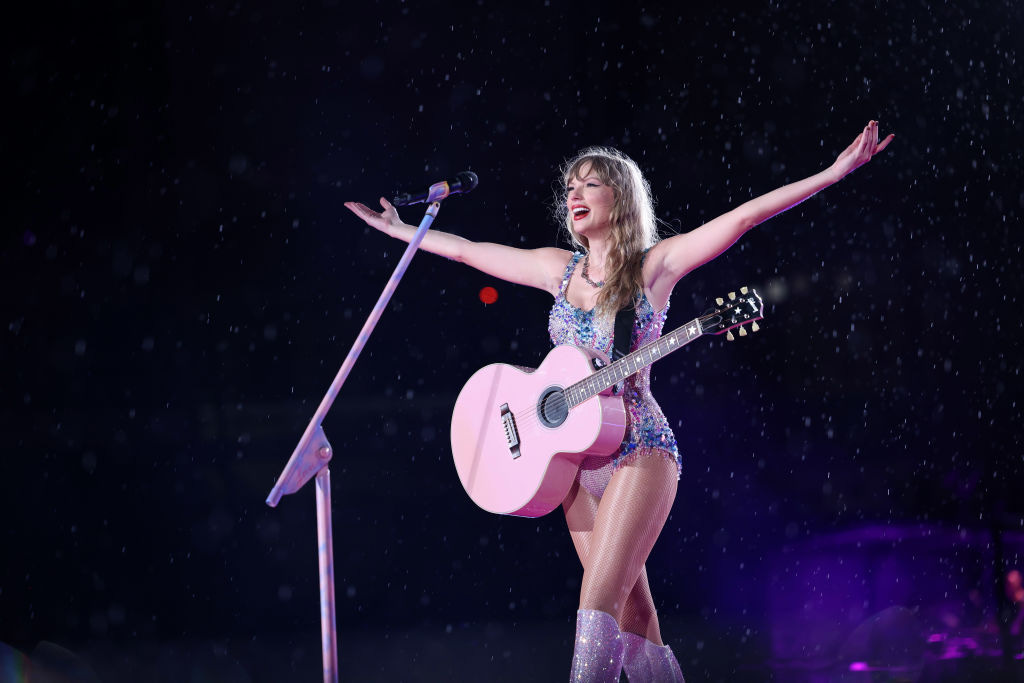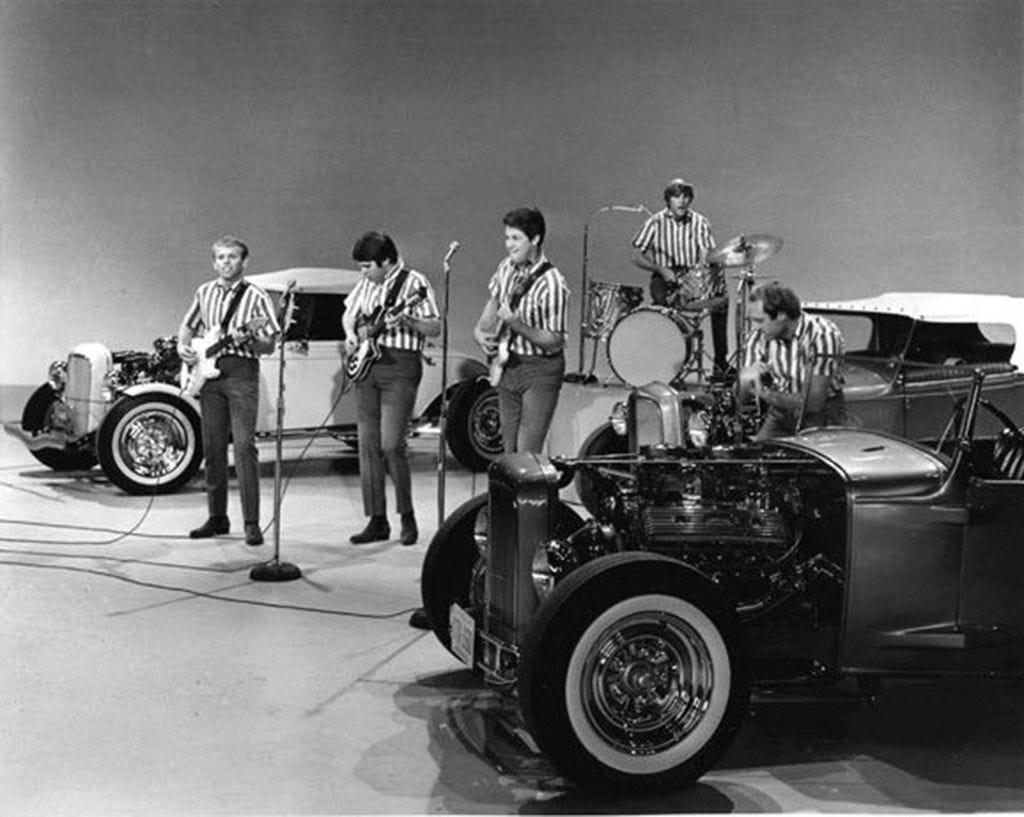|
 |
Taylor Swift Owes You Nothing
In this week’s Editor’s Corner: Neither Swift nor any artist is obligated to please the public
Taylor Swift is one of the most famous, most successful women in the world, with a hot Super Bowl-winning boyfriend and an even hotter tour that’s made her into a billionaire. But the mixed reactions, so far, to her much-awaited new album “The Tortured Poets Department” last week may be exposing a vulnerability in the Swift colossus—and in doing so, highlighting a fundamental question about the relationship between artists and their fans. What does Taylor Swift—or for that matter, what does any artist—owe us, the fans?
The answer? Nothing.
When Swift’s album dropped at midnight on Friday, April 19, millions of fans were waiting with bated breath for what would spill forth from her silver pen. But not all of them have been happy with this latest effort, with some calling the album too profane, too repetitive of her past work or too adult. The headline of one New York Times article characterized the public response to “TTPD” (as Swifties call the new record) this way: “Taylor Swift has given fans a lot. Is it finally too much?”
Having offered up a record-breaking world tour and an arguably overstuffed new album (with 31 new songs) in the past year, it’s a valid question. Perhaps she’s simply overexposed and people are finally growing tired of all things Taylor all the time. Or, more charitably, perhaps she’s set the bar so high that no one—not even Swift herself—can possibly reach it time after time.
For her own part, Swift, who’s had a famously personal connection with her fans, may be souring on the relationship. In one of the new album’s songs, “But Daddy I Love Him,” she focuses her ire on those who ostensibly care about her, but only if she continues to fit in the box they’ve defined for her: “I’ll tell you something right now/I’d rather burn my whole life down/Than listen to one more second of all this bitching and moaning/I’ll tell you something about my good name/It’s mine alone to disgrace.”
Listening to this song is a good reminder that Swift is far more than an artist. She’s a phenomenon—not just a celebrity but the celebrity of the past several years. The meanings behind her songs are parsed endlessly, as if every word contains some secret code that must be cracked. She has the ability to move economies, even cause seismic events. Yet paradoxically, she complains about having little control over her reputation and even her personal life (indeed, the song is a not-so-veiled attack on fans who decried her very brief relationship with a man they didn’t approve of).
The idea of the artist as celebrity is a relatively modern concept. Until about 500 years ago, most artists labored anonymously and were considered tradesmen, on par with coopers and smiths. For instance, even though Chartres Cathedral is now considered by many the most beautiful Gothic church in Europe, no one knows the names of the architects, sculptors and stained-glass makers who built and decorated it during the 12th and 13th centuries. In the years that followed, an occasional artist or writer would emerge from obscurity—Dante, Chaucer and Giotto, to name a few—but such distinction was rare and often posthumous.
In the 15th and 16th centuries, however, things began to change; a few select artists began achieving something akin to celebrity status. Van Eyck, Da Vinci, Michelangelo, Durer and Raphael were all famous during their lifetimes. But there were limits: Each of these men was dependent not on their “public,” but on wealthy and powerful patrons who often exercised great control over their creative lives. Michelangelo, for instance, did not want to paint the Sistine Chapel ceiling, but he bowed to pressure from one of the most powerful men in Europe at the time, Pope Julius II, and accepted the commission.
In the next few centuries, artists from Molière to Mozart struggled against the demands and expectations of powerful patrons, but by the time of the latter’s death in the late 18th century, things were again changing. Beethoven was not only the Taylor Swift of his day, famous throughout Europe and beyond, but—unlike Michelangelo or Mozart—he essentially operated like an artist does now, with full creative license. More importantly, from this time onward, an artist’s public, rather than his patrons, became his most important audience.
Today, many artists, particularly non-celebrities, have taken this a step further and ignore public taste altogether. The idea that real artists care only about being true to themselves and their art is not uncommon, even if it often leads to lives spent in frustrating obscurity. However, for today’s biggest celebrity-artists, their relationship with their art is often more fraught. When you’re a phenomenon, the sense of obligation, expectation and responsibility to the millions of people who made you famous can exert a strong pull. This undertow has only grown stronger in the age of social media.
Taylor Swift currently has 284 million followers on Instagram, more people than the total number of American adults. That’s a lot of people who are interested in what she does and says, and whom she dates and hangs out with. And many of them are not just interested but truly obsessed. They’re emotionally invested in Swift’s thoughts and actions—and they feel let down when she doesn’t conform to their wishes.
And so for megastars like Swift, who inspire a level of devotion in their fans that borders on religiosity, choosing to be an artist alone, an artist for art’s sake, is next to impossible. She is expected to maintain a delicate balance between her artistry and her fame.
Swift is certainly not the first modern artist to run into such a challenge. A lot of artists, particularly musicians, have risked the ire of their fans by not giving them what they want—and the results have been mixed. In 1965, Bob Dylan was famously booed by otherwise adoring fans at the Newport Folk Festival when he played an electric guitar in public for the first time. Dylan, who had built his reputation as a socially conscious, acoustic guitar-strumming folk troubadour, would eventually win back those fans and go on to decades of success—all while continuing to play the electric guitar.
A few years after Dylan’s switch, jazz trumpeter Miles Davis started adding funk and rock to what had been his more traditional jazz sound, upsetting many of his most ardent fans. Like Dylan, Davis also went on to have some of the greatest successes of his long career.
For some artists, radical changes in style actually become part of their appeal. Within a few years of their first hits, The Beatles significantly altered their musical style, writing much more mature lyrics and incorporating everything from sitars and string quartets to sound effects and early synthesizers into their sound. The material on their last recorded album (and by some lights, their best), “Abbey Road,” sounds nothing like “Love Me Do” and their other early songs. And yet, when they broke up in 1970, their popularity was every bit as great as (if not greater than) it had been at the start of Beatlemania in 1964.
However, other artists who abandoned successful formulas in favor of something new permanently fell from grace. When the Beach Boys moved away from their trademark sun-and-surf, California-doo-wop-tinged sound with their 1966 album “Pet Sounds,” the band’s fortunes began to fade. Even though “Pet Sounds” (and the band’s follow-up, “Smile”) are now regarded as classics, the Beach Boys were never able to recapture the success of their early years
Trouble is, when artists’ fame and popularity rely at least in part on art they’ve created years, even decades, earlier, it’s easy for them to be frozen in fans’ minds as the artists they used to be or, rather, who they are expected to be. It was the situation the Beach Boys faced when they discarded their surfboards for a more sophisticated sound—and it may be the situation that Taylor Swift is starting to face now.
Of course, Swift’s fans have every right not to buy her new album. Like all types of commerce, the making and selling of art is transactional. But there’s something sad about an artist being punished by her once-devoted fans for taking a risk or trying something new. At the same time, maybe there’s something liberating for Swift and every other superstar when the pressure to keep meeting people’s expectations fades.
So you don’t have to like Taylor Swift or her music, and in turn, she doesn’t have to like or please you. She doesn’t owe you a “banger” or a first-dance song for your wedding. Rather, she—and any artist—should be able to create what she pleases, and we the fans can take or leave it.
Finally: Robert Tracinski returns to Discourse this week with a new piece on rural Democrats. We also have a new essay from Nathan Goetting, delving into how courts are dealing blows to political speech protections, as well as a new episode of Ben Klutsey’s Conversations on Liberalism, this time with Project on Civic Dialogue founder Lara Schwartz.
And we want to remind readers that we’re now accepting letters to the editors. So please feel free to let us know what’s on your mind. Take care, and have a great week.
Latest Stories
Martin Gurri, “In Praise of Anglo-Saxons”
Jon Gabriel, “Abortion Battle Leaves Legislators With Nowhere To Hide”
Jennifer Tiedemann, “The Silver Lining in the O.J. Simpson Murder Trial”
Matthew Boyer, “An Earth Day Call To Conserve Native Plants in American Cities”
Jacob Bruggeman, “What We Can Learn from the Luddites”
Addison Del Mastro, “Sacrifices to the Manners God”
Kevin Erdmann, “Flirting With the Last ‘No’ in Housing”
From the Archives
Robert Tracinski, “Federalism Has Its Limits, and Abortion Will Soon Test Them”
Adam Thierer and Matt Ridley, “The Future of Innovation”
Alex Trembath, “White Noise and Climate Anxiety”
You’re currently a free subscriber to Discourse .


